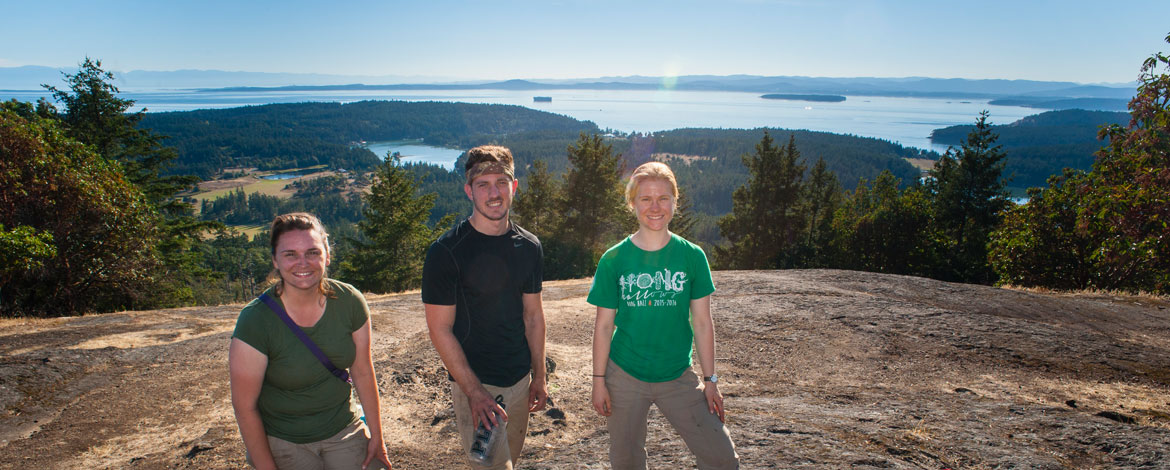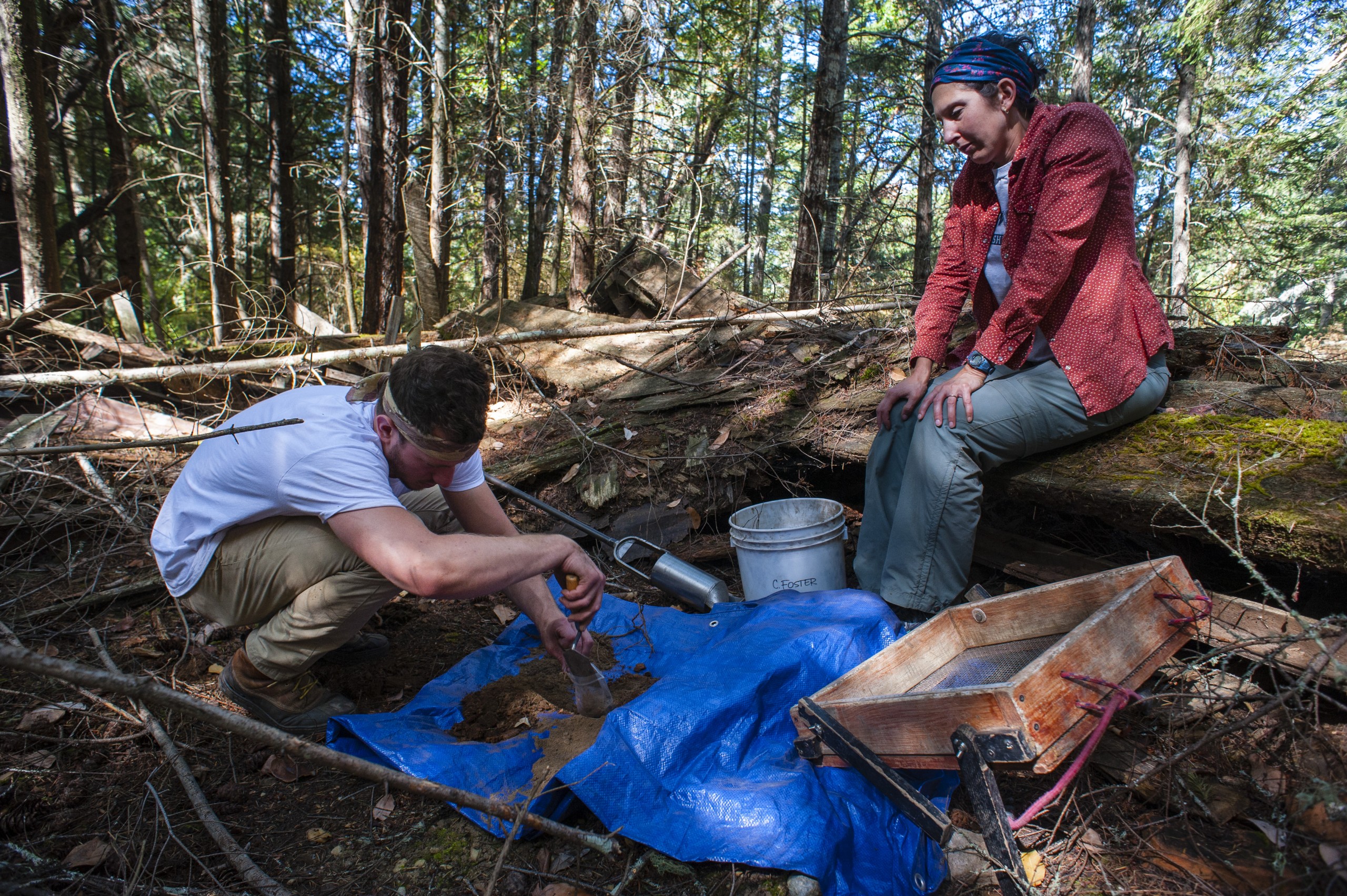Students plan to build upon archaeological research following museum partnership, summer dig in Roche Harbor

Image: Emma Holm ’17, Grant Schroeder ’17, Georgia Abrams ’18 (right to left) on Mount Young on San Juan Island during their summer dig in Roche Harbor. (Photo by Theodore Charles ’12)
By Brooke Thames '18
PLU Marketing & Communications
TACOMA, WASH. (Oct. 26, 2016)- Roche Harbor, Washington, sits on the northwest side of San Juan Island at the edge of the Canadian border. For one week over the summer, Roche Harbor served as a site of discovery for a handful of Lutes interested in archaeology.
A group of Pacific Lutheran University students ventured into the woods as part of an archaeology field method workshop, facilitated through the Seattle-based Burke Museum of Natural History and Culture. Amanda Taylor, visiting assistant professor of anthropology, runs PLU’s side of the project and leads students in the research component of the workshop.
Taylor and PLU students camped on site and conducted a dig designed to unearth the history of the land and the lives of its past residents.
“You don’t often find information about daily life in history books,” Taylor said. “That is something historical archaeology can provide to help us learn more about the past.”
The homestead consisted of two structures. Students focused on the smaller building, creating an excavation unit by digging a square around the perimeter. Students then employed a variety of field methods to uncover artifacts and information about the site and its inhabitants.
Digging shovel probes revealed a number of buried objects. Participants discovered an abundance of shoes on the property, presumably left by a family of residents from the early 1900s. One student, Taylor says, dedicated her time to researching the shoes in particular.
“It was really neat to see the old shoes that were nailed together, made out of leather, and had moss growing on them,” Taylor said.
Other artifacts found included an old coin, a costume jewelry pendant and an array of broken glass. By conducting interviews with local Roche Harbor residents, students learned of a solitary man who lived on the site in the 1950s. They attributed the glass to him because of its close proximity to the surface ground.
“We were able to see his signature on the archaeological record a lot,” said Emma Holm ’17, who served as a teaching and field assistant. “(The glass) was only 60 or so years old, but it was cool to see that there.”
Georgia Abrams ’18 — who also attended the workshop — said glass often proves instrumental in creating a timeline for a site’s history. Glass that includes a maker’s mark can be dated and used to track the history of the site.
“I really love glass. It’s really interesting to me,” Abrams said. “There’s a database you can reference for the maker’s mark, (and) that helps give context.”
Taylor says glass bottles specifically help illuminate the routines of historical peoples by highlighting “what were they eating or drinking, or products they were using.”
Grant Schroeder ’17 also participated in the workshop and decided to use chemistry to further discern past activities on the site. Schroeder spent the week collecting soil samples from various areas around the homestead and plans to run chemical tests on the samples to determine how residents used the land.
He hopes results will reveal where animals were kept and where the outhouse would have been located on the site. The results will serve as his chemistry capstone project.
Like Schroeder, Abrams and Holm also focused on specific research topics they hope to pursue throughout the academic year. Abrams focused on genealogical research, using archives to find records of the turn-of-the-century family who lived on the homestead. Holm found interest in the structures themselves and the logic behind their placement on the site.
Abrams and Holm are also working to log artifacts found at the homestead into the Burke Museum’s curatorial system. Holm says she enjoyed the hands-on experience she gained through the time in the field.
“This workshop gave me a good opportunity to be exposed to sets of skills that are really marketable and vital to archaeological work,” Holm said.
Abrams expresses particular gratitude for Taylor’s help and mentorship during the workshop.
“(Taylor) is a really good teacher, especially in the field. You can learn a lot from her,” Abrams said.
For Taylor, the archaeology field workshop reignites her love of anthropological research. Seeing students excited about historical learning boosts her own enthusiasm for teaching.
“It always makes me excited to come back to teaching in the fall,” Taylor said. “(It makes me) ready to see things from a new perspective, to teach new things, and learn about the past in a different way.”



